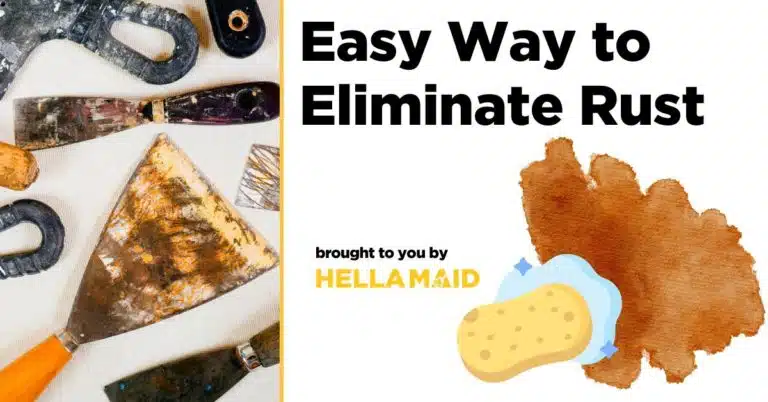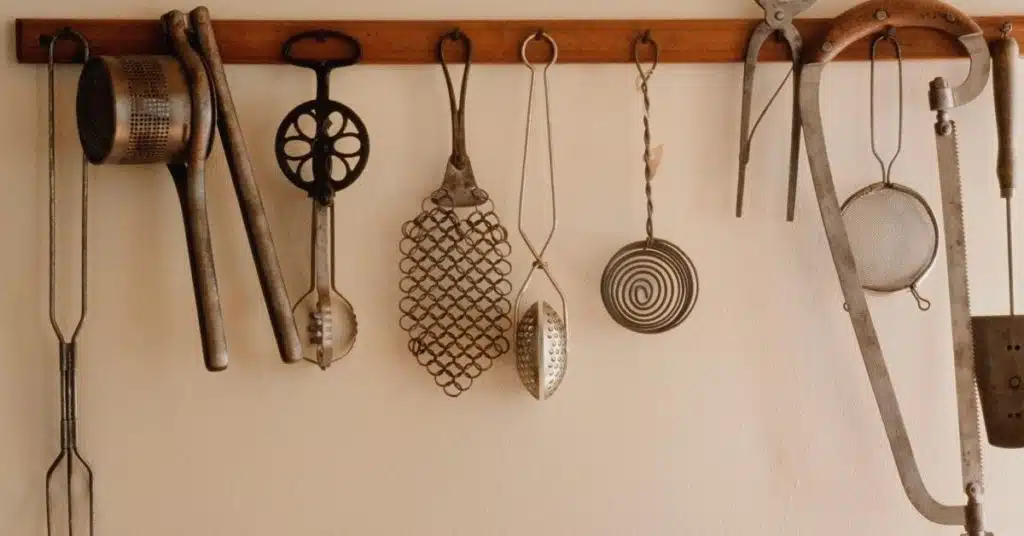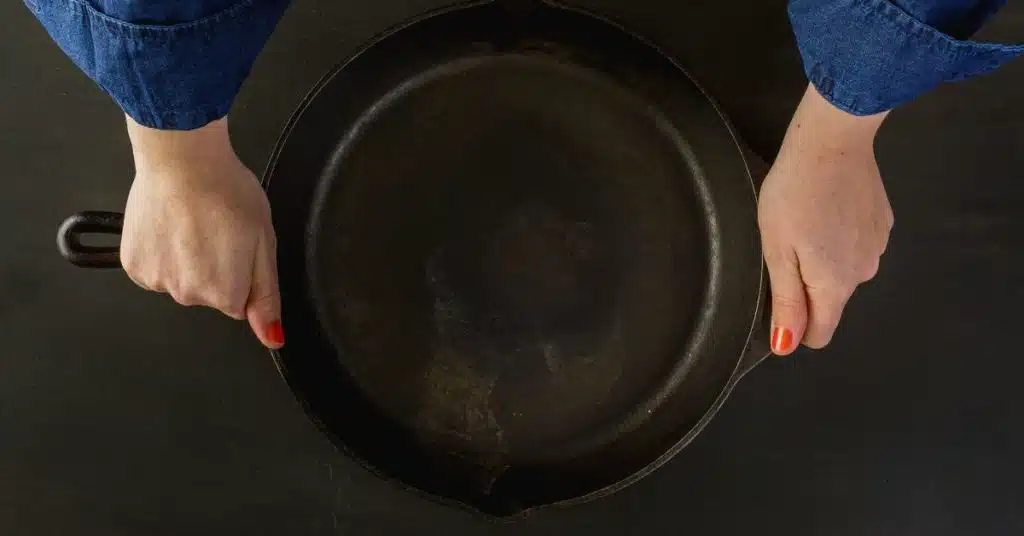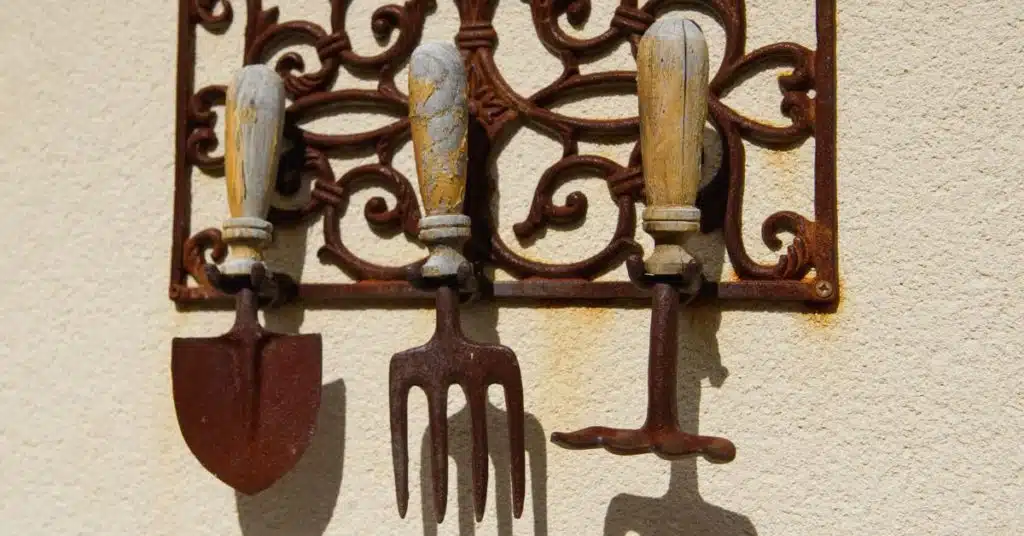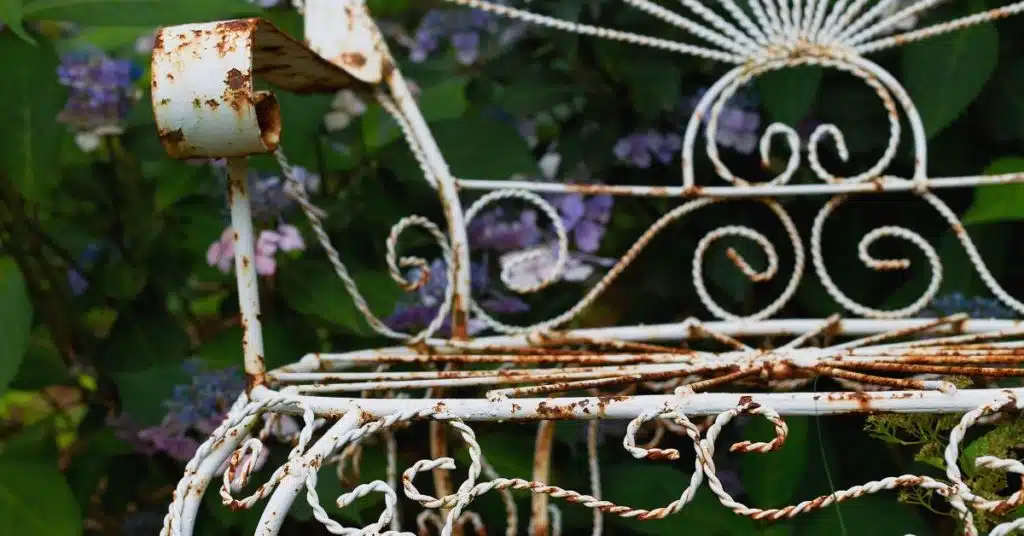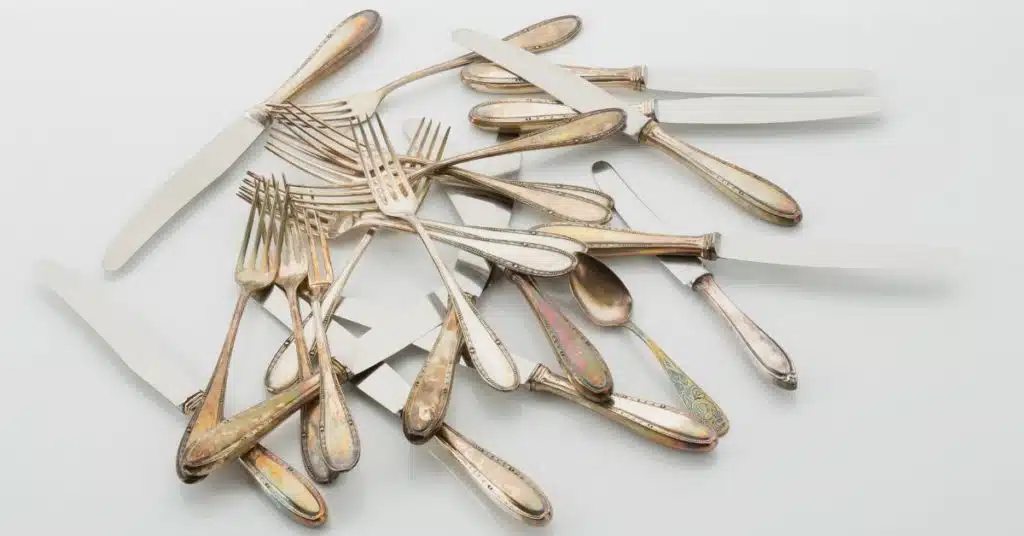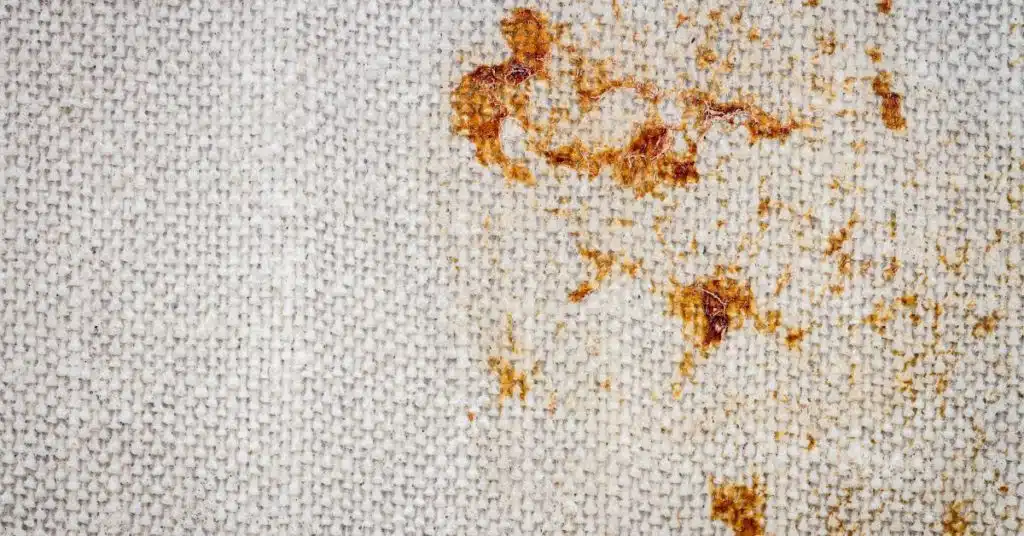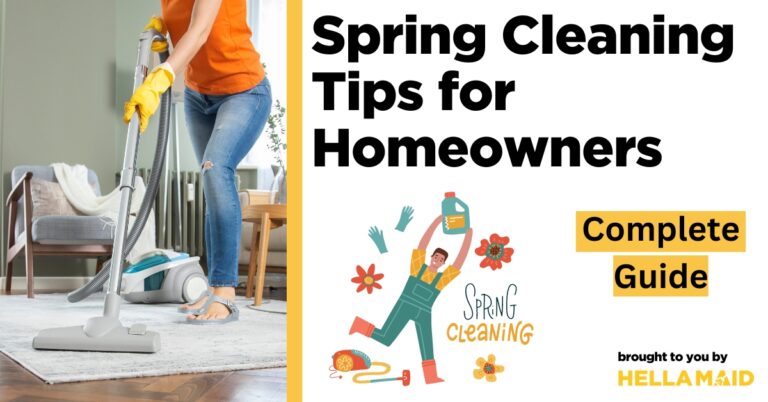Spots of rust appear out of nowhere, ruining the aesthetic of perfect shiny fixtures or even leaving a stain on your carpet. The unwanted hue of orange can make even the most beloved household decor look old and filthy, regardless of whether it’s a gardening tool or your kitchen sink. Although rust poses no immediate hazard, it is an inconvenience nonetheless. Rust not only makes your tools filthy, but it also reduces their effectiveness.
To stop or defer corrosion, most iron items are coated in rust-resistant compounds including stainless steel, galvanized using zinc, or covered in paint, lacquer, or varnish. But over time and with exposure to the weather, these barriers may deteriorate and rust may start to form.
Due to their powdered nature, iron oxides are extremely difficult to eliminate from a variety of surfaces, including textiles, stone countertops, and the metal itself. It can not always be avoided, you can still get rid of it in several natural ways. We’ll discuss the best techniques for rust removal that are both safe and simple.
How to Get Rid of Rust On A Cast Iron Skillet
Step #1: Soak it in vinegar
You can generally skip this process and move directly on to scrubbing if the amount of rust on your skillet is minimal. However, you must soak the pans in vinegar if it is already extremely rusted and damaged. Immerse your pan in a mixture of equal parts of distilled white vinegar and clean water. For huge pans, utilize a bucket or plug the sink; the vinegar mixture should cover the entire skillet. You can soak the skillet for up to eight hours but check it occasionally. Sometimes one hour is enough. The vinegar will remove the rust, but after it has, it will attack the pan’s original cast-iron surface. Pull your pan out of the soak as early as the rust starts to flake off quickly to avoid the potentially permanent pitting that may occur. It is better to discard the pan if it has become severely pitted or pock-marked from rusting.
Step #2: Scrub the rust away
You’ve now taken the seasoning off. Don’t panic. It’s all right! That was exactly the point. So even though it’s not a great idea to scour a seasoned pan using soapy water, it’s entirely acceptable in this situation. Warm water and a light detergent should be used to help the surface dry more quickly. A slightly abrasive sponge should be used to remove any remaining rust. Don’t put your skillet in the dishwasher. Avoid using a scrub that is overly abrasive, such as copper scouring pads, and instead, use a green scrub pad or a ball of steel wool. To prevent further rusting, immediately dry it with a towel. Place the pan in a warm oven to guarantee that it is completely dry.
Step #3: Re-season the skillet
You’ll need to re-season your pan at this time. Re-seasoning can be done in several ways. One option is to put a sizable sheet of aluminum foil on the bottom rack of the 350° preheated oven. Rub the entire skillet, inside and out, using a neutral oil containing a high smoke point, such as vegetable oil. After that, invert the pan onto the foil to collect any drips. After an hour of baking, allow it to cool for about 45 minutes. You should apply more oil to your pan each time you use it. As a result, seasoning layers will gradually form, improving the cooking surface and preventing rust.
Step #4: Store it properly
It’s crucial to take care of your skillet when cooking with it, cleaning it, and storing it. First, make sure the pan is completely dry and that it is oil-wiped after each usage. Keep it in a cool, dry area with hardly any moisture. Excessive humidity will progressively allow rust to return to the pan. If you’re stacking pans, line each one with several layers of paper towel before stacking.
How to Get Rid of Rust On Your Gardening Tools
Step #1: Soak your tools in rust remover
There are numerous methods for getting rid of rust. Use a rust remover instead of spending hours scrubbing, sanding, and scraping. It is better to utilize a non-toxic, biodegradable, touch-safe, reusable rust remover. Your rusted garden tools should be left overnight in a basin of rust remover.
Step #2: Rinse it with clean water
The tool should then be washed with clean water. After rinsing, the rust remover is made inactive, allowing you to apply paint to your tools without risk.
Step #3: Prep it for paint
Sand the surface of your gardening tool using fine-grit sandpaper in order to get it ready for painting.
Step #4: Clean the gardening tools
Use an all-purpose cleaner sprayed on a rag or sponge to perform a comprehensive cleaning of the handle in order to eliminate any dirt or grime.
Step #5: Paint the tools
After getting rid of the rust from the exterior of the tools, it is essential to apply a protective coating by painting the surface. If you don’t, there is a good chance that the tool will rust once more. Put painter’s tape on the handle before you paint it. After the rust has been removed, cover the tool with a layer of spray paint.
You now have brand new-looking gardening tools! Make sure to put them to good use and store them properly to prevent rusting.
How to Get Rid of Rust on Metal Furniture
Method #1: Baking Soda
Baking soda is a common chemical substance that can be found in practically every household. It may be used to remove rust from metal surfaces, and it does a very good job of it. Just spread a thin coating of the baking soda and clean water mixture over the affected area and scrape it away.
Make a thick paste by combining an adequate amount of baking soda and clean water, then mix it together. Use hydrogen peroxide instead of water if the rust is severe. Spread this acidic solution to the rusted metal surface with care using a scouring pad or cleaning rag, and then let it sit for approximately 15–20 minutes. Scrub the area thoroughly using an abrasive material or a scrubber until all of the rust flakes have been removed. Depending on the severity of the rusting, you may have to carry out the process a second time.
This straightforward method is extremely efficient in removing rust from every metal surface, including outdoor patio furniture and hand tools.
Method #2: Vinegar
Vinegar is widely recognized as both a natural cleaning product and a home treatment due to the antibacterial and acidic qualities that it possesses. The acidic intensity of the mixture can be increased by adding a pinch or two of salt, which will result in the production of a more effective rust removal solution.
Vinegar is so versatile that it may be used to clean practically any surface found inside your home, including metal.
To remove rust from outdoor metal furniture, you must first rinse each piece of furniture using vinegar and then leave it for at least ten minutes, preferably more. After that, use a scrubber and a rag to remove the dissolved rust along the surface. Baking soda is another option for neutralizing the acid in the solution.
You may quickly remove rust from furniture items made of metals such as cast iron, wrought iron, and even stainless steel by using this straightforward procedure.
Method #3: Aluminum Foil
Aluminum foil is a common household item, but only a minority of homeowners are aware that it may be used to remove rust from iron, stainless steel, and chrome steel. The reaction between the rust and the aluminum produces a substance that is simple to remove using a scrub brush.
You will need to make a solution consisting of water and salt. The next step is to soak a ball of aluminum foil in the mixture and then apply it to the rusty surface. This helps release the rust residue, which may then be cleaned off with a towel at a later stage. To get the shiny appearance back, you would need to go through the process several more times. The composition of aluminum combined with its more malleable form makes it an ideal material for eliminating rust from chrome.
How to Get Rid of Rust on Your Stainless Steel Cutlery and Appliances
Step #1: Make a baking soda paste
Always make sure to check the manufacturer’s cleaning recommendations before getting started on removing rust from stainless steel. There is a wide variety of finishes available for steel.
Combine one tablespoon of baking soda with two cups of clean water and mix thoroughly. Baking soda is an excellent non-abrasive cleaning agent that may remove rust as well as a variety of other stains and marks off surfaces and appliances.
Step #2: Scrub away the rust
To begin, take a clean rag and remove any fingerprints or smudges from the surface; keep in mind that you may need to apply some pressure. You could also use a toothbrush to apply the baking soda paste on the rust stain and then rub it all in. Baking soda is a gentle cleaner that can remove rust stains from stainless steel without harming the surface. Additionally, the grain of your stainless steel will not be damaged in any way.
Step #3: Wipe it clean
Clean the surface by rinsing it and then wiping it off with a damp paper towel. Make sure that the item is completely dry before keeping it.
How to Get Rid of Rust Stain on Fabrics
Step #1: Sprinkle salt and lemon juice
The rust stain can be removed from the garment by first applying salt, then applying freshly squeezed lemon juice on top of the salt, and finally drying the clothes in the sun. The sun’s UV rays will contribute to speeding up the process. You shouldn’t have any issues with textiles that are white or ecru in color, but if you’re working with darker-colored materials that might not be colorfast, you should test the lemon juice beforehand on a seam or an unnoticeable spot to see whether it bleaches or fades the fabric.
Step #2: DIY stain remover
To make a paste, just combine a teaspoonful of cream of tartar, a teaspoon of baking soda, and a couple of drops of hydrogen peroxide. After applying the paste to the stain and allowing it to sit for thirty minutes for it to do its work, thoroughly rinse the garment.
Step #3: Commercial stain remover
White and colorfast cloths should be treated with a rust remover purchased from a store. Be sure to carefully follow the recommendations provided by the manufacturer; many removers are extremely hazardous and can cause skin burns and harm to the finishes on appliances. After using the remover, wait a few seconds for it to take effect, and then thoroughly cleanse the area.
Step #4: Wash the clothes
Wash the clothes as you normally would, using a heavy-duty washing detergent and the temperature of the water that is specified on the garment’s care label. After washing the item, examine it well for any traces of the stain to ensure that it has been removed before drying it in a machine. You can also dry the fabric by letting it air out. After that, you should look for any remnants of the stain.

